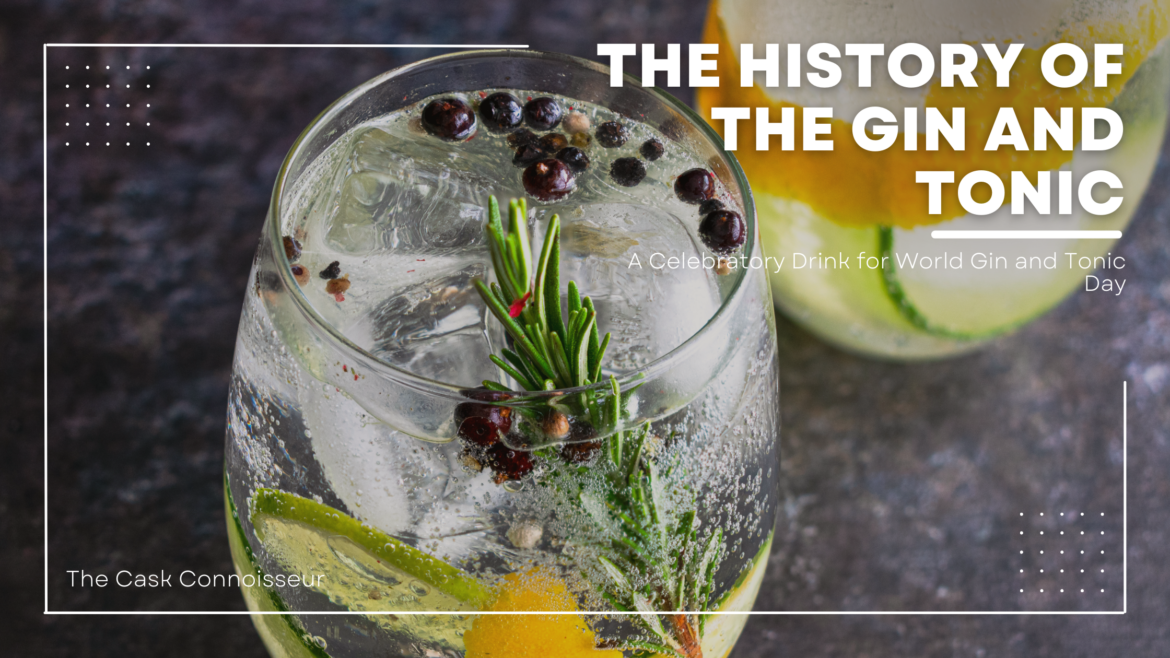As World Gin and Tonic Day approaches on October 19th 2024, it’s the perfect time to raise a glass and celebrate the fascinating history of one of the world’s most beloved cocktails. The gin and tonic (G&T) has evolved from a medicinal solution to a symbol of social elegance, enjoyed by people across the globe. But where did this iconic drink originate, and how did it become so popular? Let’s delve into the story behind this refreshing cocktail that has stood the test of time.
Origins in Medicine: A Bitter-Sweet Beginning
The story of the gin and tonic begins with two key ingredients: gin and quinine, the latter being an essential element in tonic water. Quinine, a naturally occurring compound found in the bark of the cinchona tree, was discovered by indigenous people in South America long before it was used in Europe. In the 17th century, Europeans learned that quinine could be used to treat malaria, a disease rampant in tropical regions such as India and Africa. British colonial forces stationed in these areas quickly adopted quinine as a defence against the deadly disease.
However, quinine on its own was incredibly bitter, making it difficult to consume. To make it more palatable, soldiers began mixing quinine with water and sugar, giving rise to the earliest version of tonic water. This simple concoction became a lifesaving tonic in malarial regions, but it wasn’t until gin was added to the mix that the drink gained wider appeal.
Enter Gin: A Dutch Invention Meets British Innovation
Gin’s story, like tonic water, began as a medicinal remedy. In the 16th century, Dutch physician Franciscus Sylvius is often credited with inventing gin by infusing juniper berries into alcohol. This early form of gin, known as “jenever,” was believed to have healing properties and was used to treat a range of ailments. British soldiers encountered jenever during the Thirty Years’ War (1618-1648) and brought the drink back to England, where it quickly gained popularity.
By the 18th century, gin was so widely consumed in England that the period became known as the “Gin Craze.” The drink was cheap, accessible, and easy to produce, leading to widespread consumption. However, it wasn’t exactly the refined spirit we know today. The low-quality “bathtub gin” of the time caused significant public health issues, prompting the British government to introduce regulations that would eventually improve the quality of gin.
The Gin and Tonic Is Born: A Colonial Innovation
It was during the British colonial period in India that gin and tonic as we know it today was born. British officers, stationed in India and dealing with the threat of malaria, regularly consumed quinine in tonic water to protect themselves. To make their daily dose more enjoyable, they added gin, along with lime to enhance the flavour. This new combination of gin, tonic water, and lime quickly became a refreshing and popular way to stay healthy in the oppressive heat of the tropics.
The gin and tonic soon became more than just a medicinal drink—it was a social beverage enjoyed in British colonial circles. The cooling and crisp flavour of the drink provided a respite from the heat, while the tonic’s quinine offered protection from malaria. Over time, as British influence spread, so did the gin and tonic, making its way back to England and then across the world.
Modern Evolution: A Drink for All Occasions
As tonic water became commercially available in the 19th century, the gin and tonic started to evolve beyond its medicinal roots. The introduction of carbonated tonic water by brands like Schweppes in the 1850s made the drink even more refreshing, and by the early 20th century, it was firmly established as a popular cocktail.
In recent decades, the rise of craft gin distilleries and the artisanal tonic water movement has reinvigorated the gin and tonic. Bartenders and enthusiasts alike have experimented with different botanicals in gin and various tonic flavours, leading to a renaissance of the drink. Whether enjoyed with traditional London dry gin or an innovative, fruit-forward gin, the gin and tonic is more versatile than ever before. Its simplicity—just gin, tonic, and garnish—belies the complexity of flavours that can be achieved with different combinations of ingredients.
World Gin and Tonic Day: A Global Celebration
In celebration of World Gin and Tonic Day on October 19th, gin enthusiasts all over the world come together to honour this timeless drink. It’s a day to reflect on the history of the gin and tonic, appreciate its unique blend of flavours, and, of course, raise a glass. From its humble beginnings as a medicinal remedy to its status as a global icon, the gin and tonic has cemented its place in cocktail culture.
At The Cask Connoisseur, we encourage you to celebrate World Gin and Tonic Day with your favourite gin, your preferred tonic, and a garnish that suits your style. Whether you’re a traditionalist who enjoys a classic G&T with lime or an adventurer who loves to experiment with different botanicals and garnishes, the history of the gin and tonic is a reminder that this drink is as adaptable as it is timeless.
Cheers to the gin and tonic—a cocktail born of necessity but enjoyed for its refreshing, complex flavours!





